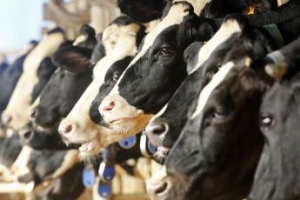Health and Welfare
Don’t Lose it Over Labor

Robotic milking is proven effective in reducing demands on labor, but it only solves a part of the labor reliance equation. Even if the need for people to bring cows into and out of the parlor and physically milk the cows is eliminated, cows still need to be bred and treated for health issues by a person.
Breeding and treating sick cows are considerably more demanding tasks than milking cows. Employees that breed and/or treat cows need to be able to find those cows that require attention as well as provide the appropriate response. Their job requires an elaborate understanding of cows and cow behavior (“cow skills”) that involves a more sophisticated set of decision making abilities. Naturally, these employees are better paid, shoulder more personal responsibility, and are scarcer than their parlor-based colleagues, the milkers.
Real-time individual animal information provided by an electronic monitoring system considerably reduces the reliance on skilled labor.
In a traditionally managed farm, both the health and reproduction management protocols are structured on handling many animals in order to identify those few animals that need or will need intervention.
Think of the typical fresh cow program that inspects every fresh cow, sick or healthy, to find those that need attention. An electronic animal monitoring system managed protocol focuses only on cows that are showing signs of illness. Healthy cows are not disturbed. This translates into a reduction of over 50% in cow handling! A significantly more efficient and effective use of employee time.
A reduced reliance on employee cow skills is another component of an electronically monitored herd. Walking the pens to identify sick animals later in lactation or to heat detect are completely redundant once an animal monitoring system has been deployed.
Reports listing the cows that need attention are always up-to-date and accessible through multiple venues. If an employee can read a report, no animal-specific decision making is needed. The computer will do the job just as well as a person who’s been around cows his or her entire life. Users report that breeders with no heat detection abilities are consistently attaining conception rates hovering around 50% off natural breeding. Obviously, it is simpler to train breeders on proper semen handling and breeding technique than it is to train them to heat detect, manage a TAI protocol or the art of interpreting rubbed off tail paint.
The ability to effectively and efficiently utilize employees that do not have extensive cow experience and/or decision-making capabilities translates into a larger pool of employment prospects that cost less money to employ. Attaining similar or better results with less manhours than in a traditionally managed farm means a bigger bang for the bucks spent on labor.
Combined with other proven benefits of animal monitoring, such as reduced use of veterinary drugs and reduced reliance on synch protocols to name a few, it is easy to understand why the investment in an animal monitoring system has an average payback of less than 18 months.














